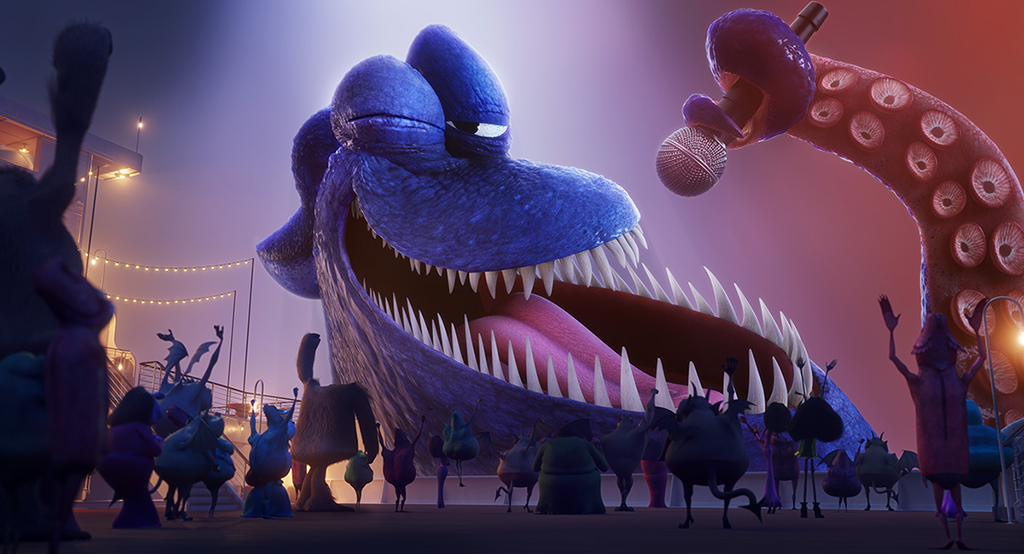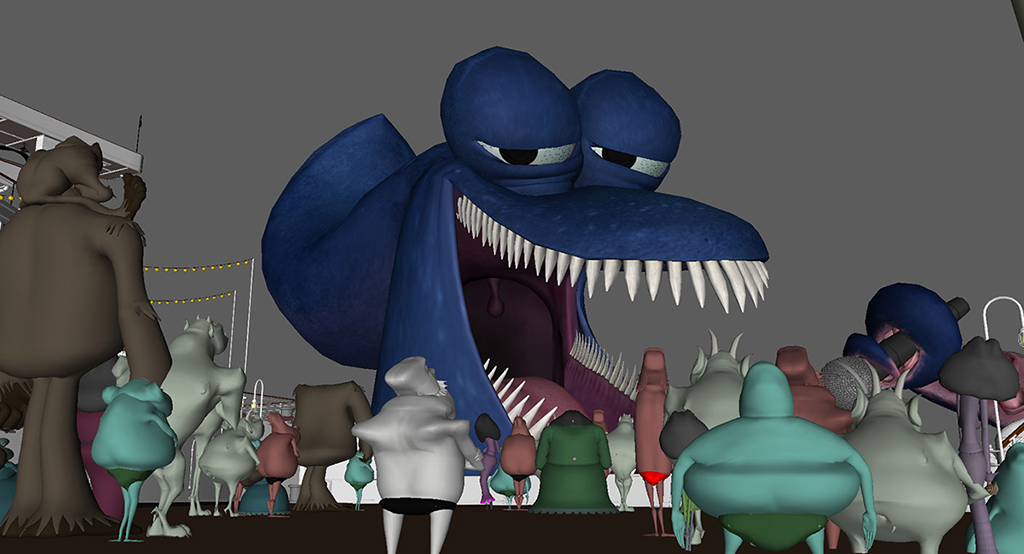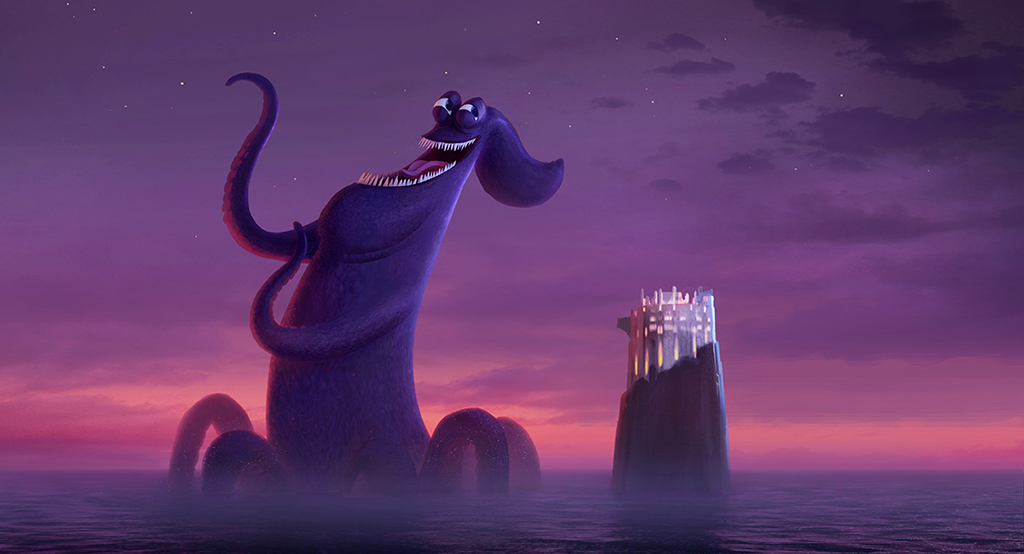By IAN FAILES

By IAN FAILES

One of the new characters featured in Hotel Transylvania 3: Summer Vacation, the latest animated film in the franchise from director Genndy Tartakovsky, is the Kraken. It’s a giant, tentacled creature that causes some widespread damage by the end of the film, but also happens to sing and dance.
Behind the animation and effects for the Kraken was Sony Pictures Imageworks, which came up with several techniques to deal with the Kraken’s detailed tentacles and the destruction around him, and developed some new approaches to rendering for the character. Imageworks Visual Effects Supervisor Mike Ford tells VFX Voice how these tasks were accomplished.
“We also built what we called a ‘stuntacle.’ It was a higher-resolution tentacle model that had textures and lookdev that could hold up closer to camera. This model also had more rigging controls that could control areas like the suction cups and the lumps and bumps on the surface.”
—Mike Ford, Visual Effects Supervisor, Sony Pictures Imageworks
The VFX studio’s first challenge was to actually build three different versions of the Kraken, who is spotted by the film’s monsters as they set out on a cruise liner. One version was the standard model seen in most of the Kraken shots. Another was dubbed ‘Kraken Mac’ and was required when the creature performs a Macarena dance sequence and has tentacles higher up on its body. “We also built what we called a ‘stuntacle,’” says Ford. “It was a higher-resolution tentacle model that had textures and lookdev that could hold up closer to camera. This model also had more rigging controls that could control areas like the suction cups and the lumps and bumps on its surface.”
Because the Kraken lives in the ocean, Imageworks needed to simulate water interaction. “We relied heavily on Houdini using FLIP and gas solvers to create the types of large-scale splashes,” details Ford. “We spent a lot of time looking at crashing waves, iceberg calving and new ships being launched. A ton of whitewater is generated when there is a lot of water being displaced, and we tried to match that aerated look in our simulations by adding whitewater and vapor layers that mimic the foamy parts of a splash, and the spray that is generated from it.”
At one point, the Kraken is involved in destroying ships and buildings in the film, which required further water simulations and destruction effects. Imageworks blocked out the main action in the layout and animation phases, and then swapped in progressively destroyed building pieces as the action heated up. A challenge here was that the Kraken’s tentacles were traveling at speeds that did not work for traditional simulation setups.

“We spent a lot of time looking at crashing waves, iceberg calving and new ships being launched. There is a ton of white water that is generated when there is a lot of water being displaced and we tried to match that aerated look in our simulations by adding whitewater and vapor layers that mimic the foamy parts of a splash and the spray that is generated from it.”
—Mike Ford, Visual Effects Supervisor, Sony Pictures Imageworks
“The effects team slowed them down and broke simulations into sections that we could then composite together into a final series of elements,” says Ford. “In some cases there would be an initial hit on the water and that would be one sim, and once the tentacle entered the water we would sim again using a completely different collision object traveling a different rate of speed.”
Along with water and building destruction, Imageworks took the opportunity on Hotel Transylvania 3: Summer Vacation to test some new rendering features at the studio. The first was progressive rendering, which replaced Imageworks’ standard practice of rendering individual buckets in parts of a frame. “Our team also created an adaptive sampling feature in Arnold,” says Ford, “allowing the renderer to sample areas of the image in order to reach a certain quality level without the need for artist intervention. Adaptive rendering really helped solve problem areas that we previously had to run trial-and-error tests on, or use brute force by throwing more samples at the whole image.
“With the progressive and adaptive rendering updates in place,” adds Ford, “we also implemented what we called ‘Plus-AA’ that could stop and start a render at any point in its process, allowing us to effectively pick up where we left off if we needed to increase the quality of an image. And we developed a de-noiser called ‘Spotless’ which paved the way to really optimizing the render process.”

“We also implemented what we called ‘Plus-AA’ that could stop and start a render at any point in its process, allowing us to effectively pick up where we left off if we needed to increase the quality of an image. And we developed a de-noiser called ‘Spotless’ which paved the way to really optimize the render process.”
—Mike Ford, Visual Effects Supervisor, Sony Pictures Imageworks
The idea behind Spotless was that renders could be set to use much lower samples on render passes. When Imageworks showed Tartakovsky these de-noised images, relates Ford, the director approved them without any particular comments on the quality or noise. “Internally,” says Ford, “if we felt the images looked a little soft or noisy in specific areas, we would put them back on the farm using the Plus-AA and let the image restart from the point it was stopped. It was an incredibly efficient way to render, and we were rendering increasingly more frames overnight with fantastic fidelity. It was a huge efficiency jump for us and let us iterate creatively much faster than we had done before on previous films.”